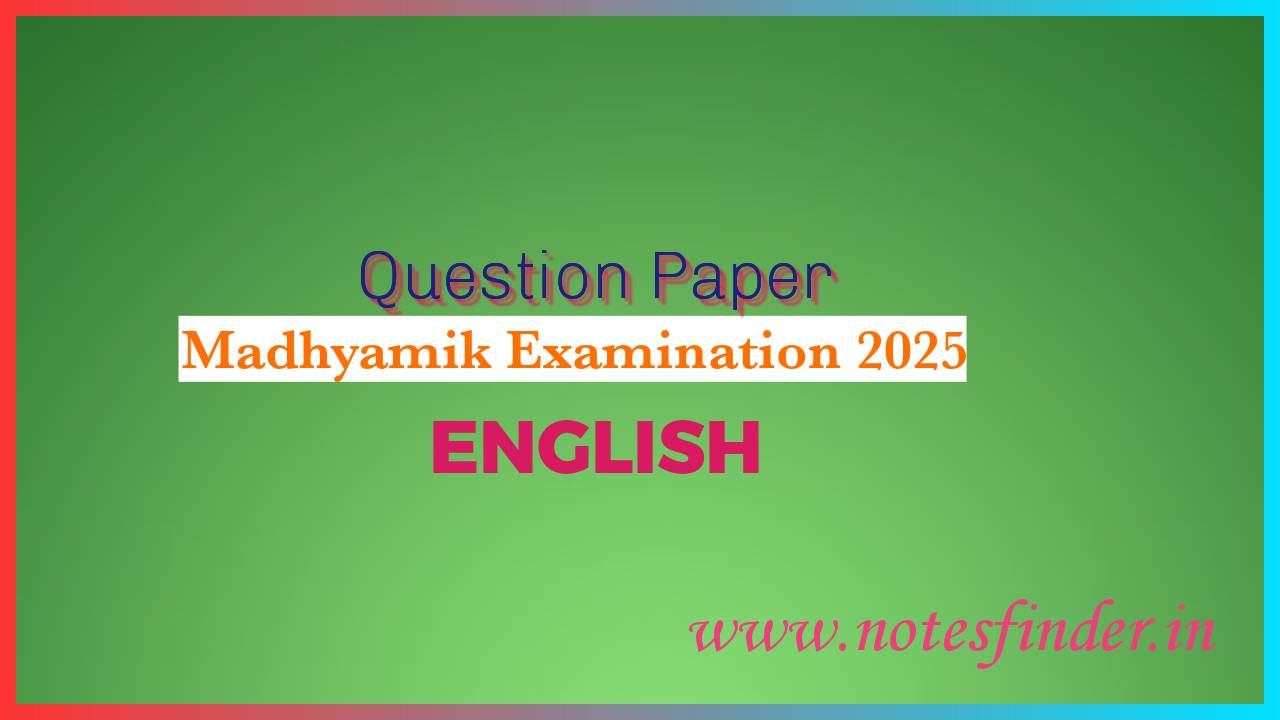Lesson 1 Mother’s Day
A. Look at the picture and discuss the questions.
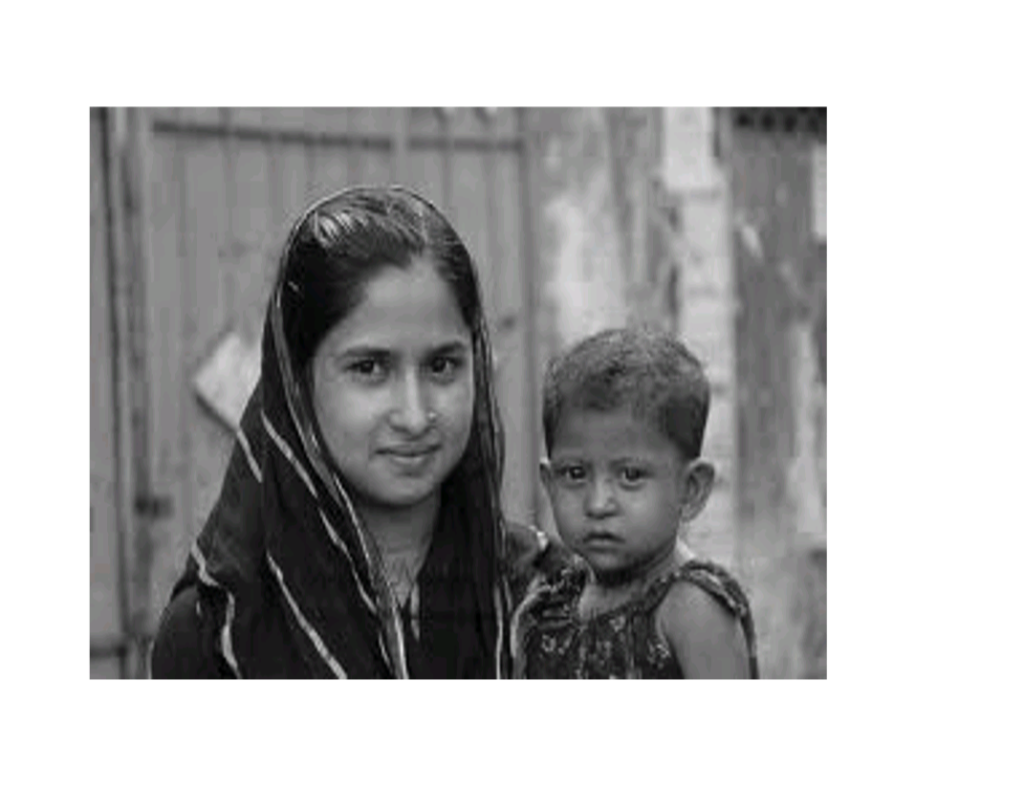
1. What do you think the woman is to the child?
Answer: I think the woman is mother to the child.
2. Why is she holding the child on her flank?
Answer: She is holding the child on her flank because she child has not learned to walk or stand properly.
3. Can a mother be compared to anybody?
“She can be compared with no other; This lovely lady is none but my mother.”
Answer: No. Mother cannot be compared to anybody.
B. Listen to the audio and answer the questions that follow.
Listening text 2
Choose the correct answer.
1. According to ancient Greek myths Rhea is the
a. mother of gods.
b. goddess of love.
c. goddess of wealth.
d. goddess of health.
Answer: (a) mother of gods.
2. The name of Jesus Christ’s mother was
a. Rhea.
b. Mary.
c. Anna.
d. Anna Junior.
Answer: (b) Mary.
3. Julia Ward Howe was
a. Dutch.
b. English.
c. Australia.
d. American.
Answer: (d) American.
4. Mother’s Day was first announced as a formal holiday in the USA in
a. 1872.
b. 1905.
c. 1910.
d. 1914.
Answer : (d) 1914
5. In 1914 the American president was
a. Roosevelt.
b. Ford.
c. Nixon.
d. Wilson.
Answer: (d) Wilson.
6. Which country doesn’t celebrate Mother’s Day on the 2nd Sunday of May?
a. Denmark
b. The UK
c. Italy
d. Turkey
Answer : (b) The UK.
D. Listen to the text again and answer these questions.
1. What country first observed Mother’s Day as a national holiday?
Answer: America first observed Mother’s Day as a national holiday.
2. When is Mother’s Day now celebrated by most of the countries in the world?
Answer: The second Sunday on May is celebrated now Mother’s Day by most of the countries in the world.
3. How is Mother’s Day usually observed?
Answer : Mother’s Day is usually observed with flowers, cards, candy and dinners out.
4. Why should we observe Mother’s Day?
Answer: We should observe Mother’s Day to show our respect and great love for our mother.
E. Write a paragraph by answering each of the following questions.
1. Do you help your mother with her housework? How?
Answer: Yes, I help my mother with her housework.
I help my mother to clean our rooms and wash our clothes. Sometimes I cut and wash vegetables for her. Whenever I am at home, I help her in household works. Besides this I go to market to buy things for her.
2. Do you celebrate Mother’s Day? If yes, when and how?
Answer: Every year I celebrate mother’s day on the 2nd Sunday of May. I buy a bouquet of flowers and a beautiful cake for her. Later I prepare a special food for her and present her a gift.
Lesson: 2 May Day
A. Look at the picture and talk about it.
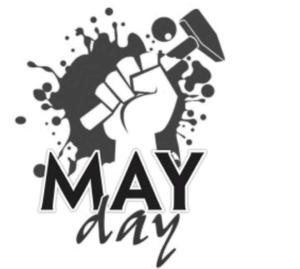
1. What do you see in the picture?
Answer : I can see a hand holding a hammer and May Day is written under it.
2. Can you relate any historical event to this picture? What happened on this day?
Answer : Yes, I can relate the historical event to this picture.
On May 1st in 1886, inspired by the trade unions(2), half of the workers at the McCormick Harvesting Machine Company in Chicago went on strike demanding an eight-hour workday.
B. Read the text and answer the questions that follow.
May Day or International Workers’ Day is observed on May 1 all over the world today to commemorate the historical struggle and sacrifices of the working people to establish an eight-hour workday. It is a public holiday in almost all the countries of the world.
Since the Industrial Revolution^ in the 18th and 19th centuries in Europe and the US, the workers in mills and factories had been working a long shift, fourteen or even more hours a day.
On May 1st in 1886, inspired by the trade unions(2), half of the workers at the McCormick Harvesting Machine Company in Chicago went on strike demanding an eight-hour workday. Two days later, a workers’ rally was held near the McCormick Harvester Machine Company and about 6000 workers joined it. The rally was addressed by the labour leaders.
They urged the workers to stand together, to go on with their struggle and not to give in to their bosses. At one point of the rally, some strikebreakers started leaving the meeting place. The strikers went down the street to bring them back. Suddenly about 200 policemen attacked them with clubs and revolvers. One striker was killed instantly, five or six others were seriously wounded and many others were injured.
The events of May 1, 1886 are a reminder that workers will continue to be exploited until they stand up and speak out to gain better working conditions, better pay and better lives.
Notes
1. Industrial Revolution: the period, especially in the 18tb and 19th centuries Europe, when machines were invented and first factories were established.
2. Trade Union: an organisation that represents workers of mills and factories.
Questions
1. What does May Day refer to?
Answer: May Day refers to the struggles and sacrifices of labourers on 1st May, 1886 when they demanded an eight -hour workday.
2. How long did the workers have to work in a day before the May 1 strike?
Answer: The workers have to work 14 hours or more a day before the May 1 strike.
3. Why did the workers in Chicago go on a strike?
Answer : The workers in Chikago went on a strike to demand an eight hour work day.
4. What do you learn from the events of May 1, 1886?
Answer : From the events of May 1, 1886 I learn that workers will continue to be exploited until they stand up and speak out to gain better working conditions, better pay and better lives.
C. Fill in the blanks with the verbs given in the box. Put them into their correct forms.
add arrive begin do hear live send support tread work
Tania is a poor garment worker. She works in a big garment factory in Gazipur. She lives in a slum with a few fellow workers. She works eight hours a day on a monthly salary of Tk. 3000/-. She does overtime to add some more money to her income. If she can save something, she sends it to her father to support the family. One day Tania was busy with her work in the factory. Suddenly she heard someone shouting “Fire! Fire!” The workers were panic-stricken and everyone began to rush to the stairs. There were not enough staircases in the factory building. So some workers were trodden under the foot and others were injured in some other ways. However, the fire brigade arrived there in minutes and nothing serious happened.
D Now read the completed passage in C silently and answer the following questions.
1. Do you think Tania’s monthly salary is enough for her work?
Answer : No. Tania’s monthly salary is not enough for her work. Tk. 3000 is very less to live a normal life in today’s time of continuous price- hike.
2. Does Tania live in a hygienic place? Is it good for her health? What may happen if she continues living there?
Answer : No. Tania does not live in a hygienic place. She lives in a slum and slums are usually dirty with no proper sanitation system.
No, living in a slum is definitely not good for health.
If she continues to live there for a long time, she will surely suffer from life- threatening diseases.
3. Is the factory safe enough for workers to work in? Why do you think so?
Answer : No. The factory is not safe enough for workers to work in because there were not enough staircases in the building.
3. Do you have any suggestions for factory workers’ general health, happiness and safety? If so, what?
Answer : Yes, I have few suggestions. A factory should have all the modern safety measures like proper arrangement of materials, enough space to walk freely, proper ventilation, music system etc.
Lesson: 3 International Mother Language Day – 1
A. Look at the picture and talk about it.
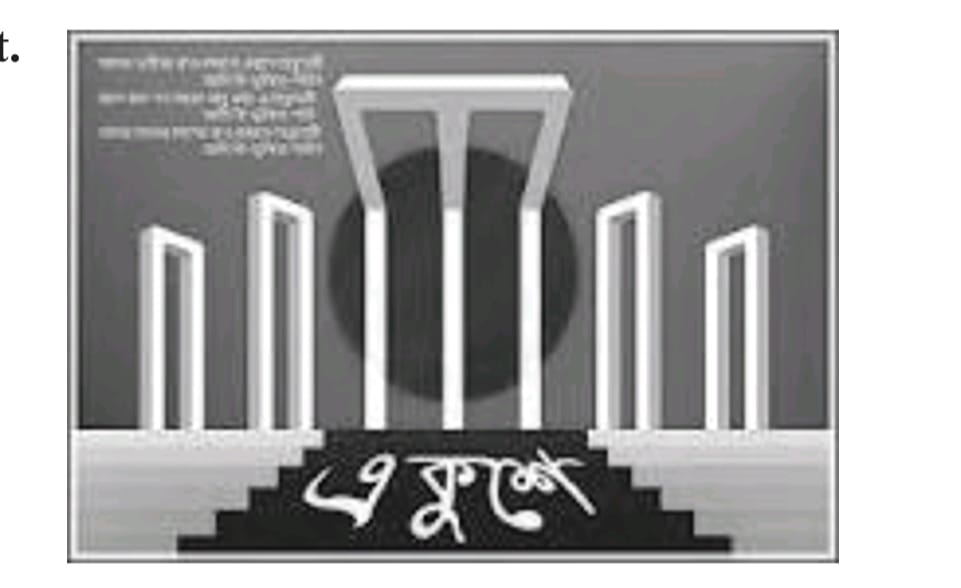
1. What’s the picture about?
Answer: The picture is about the demonstrations of Bengali Language Movement.
2. What’s the place in the picture?
Answer: The picture is Shaheed Minar, a national monument in Dhaka.
3. Why was it built?
The Shaheed Minar in Dhaka was built in 1972 to commemorate those killed during the Bengali Language Movement.
B. Read the text
21 February is a memorable day in our national history. We observe the day every year as International Mother Language Day. The day is a national holiday.
On this day, we pay tribute to the martyrs who laid down their lives to establish Bangla as a state language in undivided Pakistan in 1952. The struggle to achieve our language rights is known as the Language Movement.
The seed of the Language Movement was sown on 21 March 1948 when Mohammad Ali Jinnah, the Governor General of Pakistan, declared in a public meeting in Dhaka that Urdu would be the only state language of Pakistan. The declaration raised a storm of protest in the eastern part of the country. The protest continued non-stop, gathering momentum day by day. It turned into a movement and reached its climax in 1952. The government outlawed all sorts of public meetings and rallies to stop it.
The students of Dhaka University defied the law and brought out a peaceful protest procession on 21 February 1952. When the procession reached near Dhaka Medical College, the police opened fire on the students, killing Salam, Rafiq, Barkat, Safiur and Jabbar. As a result, there were mass protests all over the country and the government had to declare Bangla as a state language. This kindled the sparks of independence movement of Bangladesh.
C. Complete the chart.
| Time | What happened |
| 1947 | Pakistan and India got independence from the British. |
| 1948 | Mohammad Ali Zinnah , declared in a public meeting in Dhaka that Urdu would be the only state language of Pakistan. |
| 1952 | The students of Dhaka University defied the law of making Urdu the only state language and brought out a peaceful protest procession. |
D. Match the words with their meanings.
| Words | Meanings |
| Tribute | an act to show respect or admiration |
| Climax | the most exciting point in time |
| Outlaw | to ban |
| Defy | to refuse to obey |
| Provoke | the ability to keep increasing or developing |
| Relent | to give in |
| Momentum | to have a particular effect |
E. Answer these questions.
1. Why do we observe 21 February as the International Mother Language Day?
Answer: We observe 21 February as the International Mother Language day as UNESCO has proclaimed it. On this day we pay tribute to the martyrs who laid down their lives to establish Bangla as a state language in undivided Pakistan in 1952.
2. What happened when Urdu was declared as the only state language of Pakistan?
Answer: The declaration raised a storm of protest in the eastern part of the country. The protest continued non-stop, gathering momentum day by day. It turned into a movement and reached its climax in 1952.
3. “The seed of independence was sown on 21 February 1952”. Do you agree? Why?
Yes, I agree with the statement. It was a one sided decision by the government of Pakistan. The people of East Bengal understood the oppressive nature of Pakistan and they wanted to be free from the rule of Pakistan.
Lesson: 4 International Mother Language Day – 2
A. Discuss these questions.
1. When did the International Mother Language Day celebration begin?
Answer: International Mother Language day celebration began in 1999.
2. What does the abbreviation UNESCO stand for?
Answer: United Nations Educational, Scientific and Cultural Organisation.
3. What is the other name of 21 February?
Answer: The other name of 21 February is Shaheed Dibosh.
B. Read more about International Mother Language Day.
21 February is observed as Shaheed Dibosh every year throughout the country in remembrance of the martyrs of language movement of 1952. The commemoration begins at the early hours of the day with mourning songs that recall the supreme sacrifices of our language martyrs. People wear black badges and go to the Shaheed Minar in barefoot processions, singing mourning songs. They place wreaths at the Minar. Many of them visit the graves of the martyrs at Azimpur graveyard and pray for them. They also attend various programmes organised in remembrance of the language martyrs.
The UNESCO (United Nations Educational, Scientific and Cultural Organisation) on 17 November in 1999 proclaimed February 21 as the International Mother Language Day in recognition of the sacrifices of the martyrs for the rightful place of Bangla. The day is now annually observed worldwide to promote awareness of linguistic and cultural diversity and multilingualism.
C . Match the words/phrases in the table with their meanings.
| Words/Phrases | Meanings |
| Wreath | An arrangement of flowers in the shape of a circle. |
| In remembrance of | In memory of |
| Proclaim | Declare |
| Promote | Encourage |
| Diversity | Variety |
| Multilingualism | Practices of using several languages |
| In recognition of | In appreciation of |
D. Read the text in B again and answer these questions.
1. Why is 21 February called Shaheed Dibosh?
Answer: 21 February is called Shaheed Dibosh because of the selfless sacrifices of the martyrs of language movement of 1952.
2. Why do people go to the Shaheed Minar! How do they go there?
Answer: People go to the Shaheed Minar to recall the supreme sacrifices of our language martyrs. People wear black badges and go to the Shaheed Minar in barefoot processions, singing mourning songs.
3. Why is 21 February now observed throughout the world every year?
Answer: The UNESCO on 17 November in 1999 proclaimed February 21 as the International Mother Language Day in recognition of the sacrifices of the martyrs for the rightful place of Bangla. The day is now annually observed worldwide to promote awareness of linguistic and cultural diversity and multilingualism.
E. Complete the passage with suitable words.
On 21 February 1952 blood was shed at a place between Dhaka Medical College and Dhaka University in order to establish Bangla as a state language of Pakistan.
All subsequent movements contributed the struggles for independence had their origin in the historic language movement. Shaheed Minor is the the symbol of the supreme sacrifice for the mother tongue.
F. Write briefly how you observed this year’s 21 February at your school.
Lesson: 5 Independence Day
A. Look at the picture and ask and answer die questions about it.
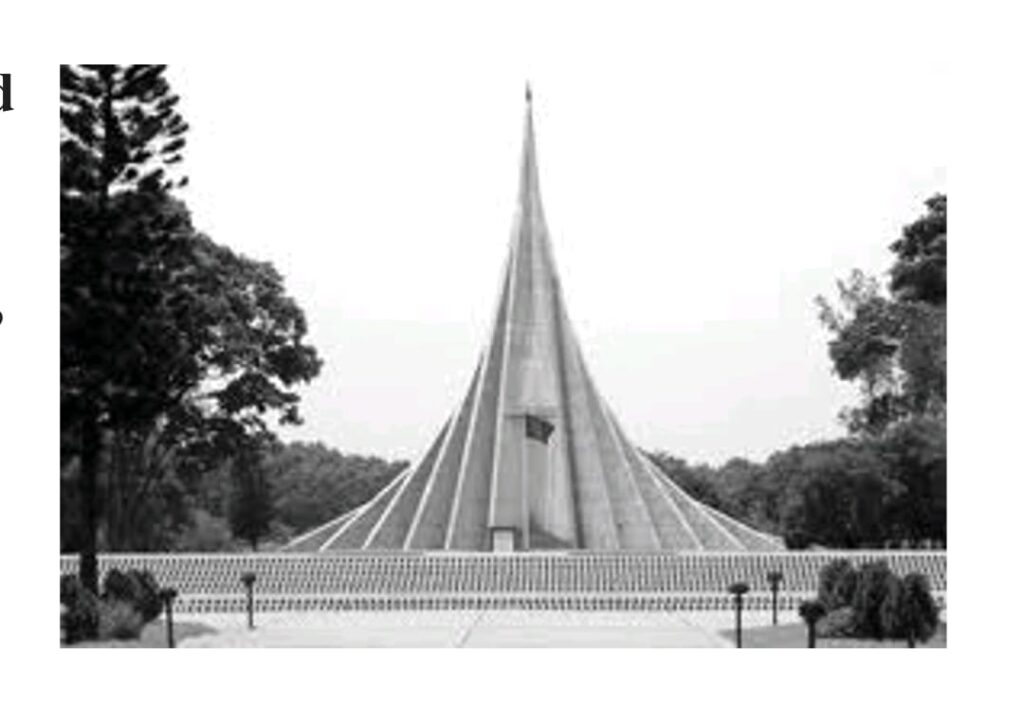
1. What can you see in the picture?
Answer: I can see the National Martyrs’ Memorial in the picture.
2. Where is it?
Answer: It is in Savar, about 35 km north-west of the capital of Dhaka.
3. Why was it built?
Answer: It was built to honour and remember those who died during the war of liberation and genocide in 1971, which resulted in Bangladesh’ independence.
B. Read the text
26 March, our Independence Day, is the biggest state festival. The day is celebrated every year in the country with great enthusiasm and fervour. It is a national holiday. All offices, educational institutions, shops and factories remain closed on this day. The day begins with a 31 gun salute.
Early in the morning the President and the Prime Minister on behalf of the nation place floral wreaths at the National Mausoleum at Savar. Then other leaders, political parties, diplomats, social and cultural organisations, educational institutions and freedom fighters pay homage to the martyrs. People from all walks of life also go there in rallies and processions. There are many cultural programmes throughout the day, highlighting the heroic struggle and sacrifice in 1971.
The country also witnesses a spectacular parade of defence forces, border guards, police, ansars and the VDP (Village Defence Party) at the National Parade Ground near the National Parliament. In Bangabandhu National Stadium, school children, scouts and girl guides take part in various displays to entertain thousands of spectators. Educational institutions also organise their individual programmes. Sports meets and tournaments are also organised on the day, including the exciting boat race in the river Buriganga.
In the evening, all major public buildings are illuminated with colourful lights. Bangla Academy, Bangladesh Shilpakala Academy and other socio-cultural organisations hold cultural functions. Similar functions are also arranged in other places in the country.
C. Match the words with their meanings.
| Words | Meanings |
| fervour | a strong feeling of excitement |
| alike | in a similar way |
| spectator | a person who is watching an event |
| displays | acts of performing skills |
| illuminate | to light up |
D. Choose the best answer.
1. Our biggest state festival is
a. Victory Day.
b. Shaheed Dibosh.
c. Pahela Boishakh.
d. Independence Day.
Answer: d. Independence Day.
2. The celebration of Independence Day begins with
a. processions.
b. gun salute.
c. placing wreaths at the National Mausoleum,
d. parade by defence forces.
Answer: b. gun salute.
3. The National Mausoleum is
a. on Dhaka University campus,
b. at Ramna Park,
c. at Savar.
d. near Dhaka Medical College.
Answer: c. at Savar.
4. On Independence Day a National Parade is held
a. at the National Parade Ground,
b. in the streets,
c. in the decorated vehicles,
d. in Bangabandhu Stadium.
Answer: a. at the National Parade Ground.
E. Write in brief, how you have celebrated this year’s Independence Day at your school.
Lesson 6: Pahela Boishakh
A. Look at the picture. Then ask and answer the questions about it.
1. What’s the picture about?
2. Where do you think it is?
3. What are the people doing?
B. Read the text.
‘Pahela Boishakh’ is the first day of Bangla new year. The day is a public holiday. This day has a special significance for us as it forms a part of Bangalee culture and tradition. People from all walks of life, irrespective of their ethnic identity or religious beliefs, celebrate the day with traditional festivities. On this day, the whole of Bangladesh is in a festive mood. The day inspires people to start life with renewed hopes and inspirations.
Every year the day is celebrated traditionally. People wake up early in the morning, have a bath and wear their traditional clothes. Women wear white saris with red borders and adorn themselves with colourful churis and flowers, while men dress themselves with pajamas and punjabis. It is a day when people love eating traditional food.
This day the most colourful event is held in Dhaka. Early in the morning, people in hundreds and thousands pour in from all directions to attend the cultural function at Ramna Batamul organised by Chhyanata. The cultural programme begins just with sunrise and the renowned artists of the country take part in the program that starts with the famous Tagore-song Esho-he-Boishakh, Esho Esho …….. . Artists also sing traditional folk songs, and display classical dances with the rhythm of musical instruments.
People also come to join the colourful processions, the biggest carnival of the country, organised by the Fine Arts students of Dhaka University. The procession usually displays the traditional practices of Bangalee culture. The masks and wreaths worn by the people are so fascinating! Often they symbolise contemporary worries or happiness in the national life. It attracts increasing number of foreign tourists every year.
The day is also observed all over the country. Different social and cultural organisations and educational institutions celebrate the day with their own cultural programmes.
On this day, newspapers bring out special supplements. There are also special programmes on the radio and television channels.
The celebration of Pahela Boishakh marks a day of cultural unity for the whole nation irrespective of caste and creed.
C. Ask and answer these questions in pairs.
1. Do you go out in the morning of Pahela Boishakh? If you do, where do you go? If not, what do you do?
Answer: I go out in the morning of Pahela Boishakh.
I go to a club near our home where various functions are held.
2.What kind of food do you eat in the morning of Pahela Boishakh?
Answer: I eat traditional foods like rice, fish curry and dal in the morning of Pahela Boishakh.
3. Do you wear any special clothes on this occasion?
Answer: Yes. I wear pajama and punjabi on this occasion.
D Complete the passage with suitable words.
The word Pahela means the first and Boishakh is the first month of Bangla calendar. The day is observed not only in Bangladesh but also in some other parts of the world. It is celebrated in West Bengal, Assam and Tripura. It is also observed in Australia and the UK. In Australia, the largest festival for Bangla new year is the Sydney Boishakhi Mela held in Sydney Olympic Park. In England, the Bangalees traditionally celebrate the day with a street procession in London. It is the largest Asian festival in Europe, from Bangladesh and West Bengal.
E. Describe your own cultural or religious festival that you celebrate. You can use the following words. You can also use other words relevant to the festival.
colourful special traditional religious dance cultural flowers food songs festive


